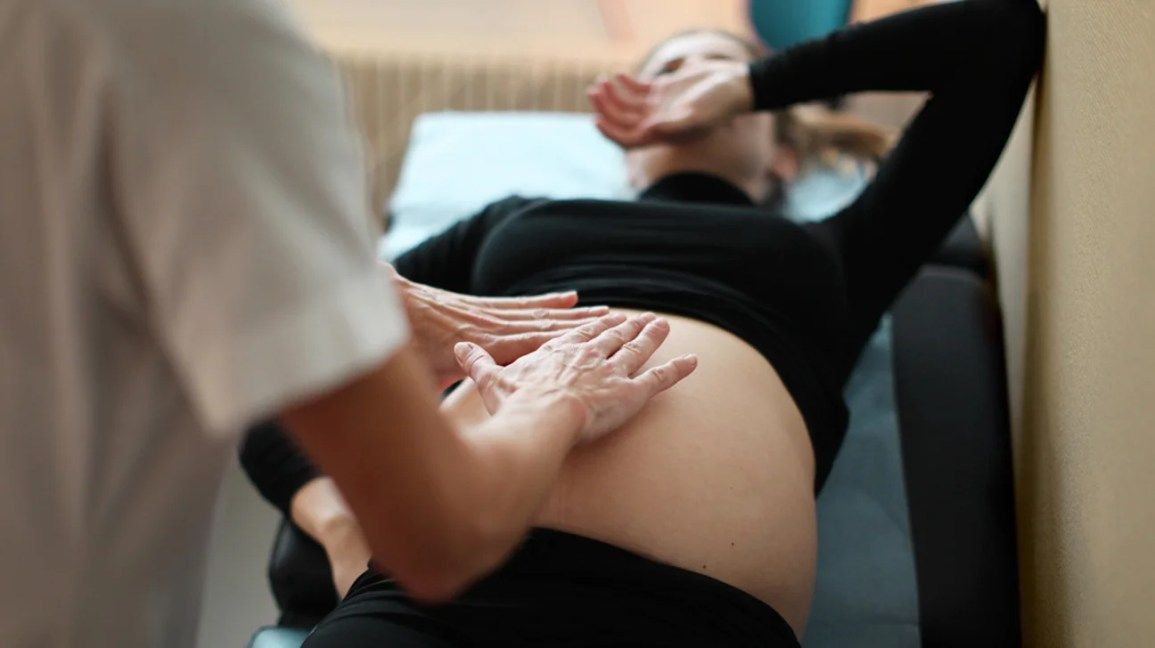
The journey of childbirth is a complex physiological process, and one of the most critical factors influencing its progression and outcome is the position of the baby within the mother’s pelvis, especially in early labor. While the birthing person experiences the initial contractions and bodily changes, the healthcare team focuses on a range of assessments to ensure a safe and supportive environment for delivery. Checking the baby’s position early in labor is a fundamental aspect of prenatal and intrapartum care, providing vital information that guides medical decisions, anticipates potential challenges, and helps tailor labor management strategies.
The Crucial Role of Fetal Position
Fetal position refers to the relationship of the presenting part of the fetus (typically the head) to the mother’s pelvis. The optimal position for a vaginal birth is cephalic (head-first) presentation, specifically occiput anterior (OA), where the back of the baby’s head is towards the mother’s front, allowing the smallest diameter of the head to engage with the pelvic inlet. Any deviation from this ideal can prolong labor, increase pain, or necessitate interventions such as instrumental delivery or C-section. Early identification of fetal position, particularly whether it’s optimal or a potential malposition, allows healthcare providers to implement strategies that may encourage rotation or prepare for alternative birth plans.
Important Disclaimer: It is paramount to emphasize that checking fetal position, especially through internal vaginal examination or advanced palpation techniques, requires extensive training, clinical skill, and a thorough understanding of anatomy and physiology. These procedures are not intended for self-assessment by individuals in labor. Attempts by untrained individuals to perform these checks can lead to misinterpretation, unnecessary anxiety, discomfort, and potentially introduce infection. All assessments related to fetal position during labor should be performed by qualified healthcare professionals such as obstetricians, midwives, or nurses.
Methods Used by Healthcare Professionals to Check Fetal Position
Healthcare providers employ a combination of techniques, depending on the stage of labor, individual circumstances, and clinical judgment.
1. External Palpation: Leopold’s Maneuvers
Leopold’s Maneuvers are a systematic series of four palpation techniques performed on the pregnant abdomen. Developed in the late 19th century by German obstetrician Christian Gerhard Leopold, these maneuvers allow a trained practitioner to determine the lie, presentation, and position of the fetus. While somewhat less precise than ultrasound, they are a valuable, non-invasive, and cost-effective screening tool, especially in early labor.
- First Maneuver (Fundal Grip): The practitioner gently palpates the uterine fundus (the top of the uterus) with both hands. This maneuver helps identify the fetal part occupying the fundus, typically the head (firm, round, mobile) or the buttocks (softer, less defined, irregular). This indicates the fetal lie (longitudinal, transverse, or oblique).
- Second Maneuver (Umbilical Grip): The practitioner’s hands move down to the sides of the uterus, between the fundus and the symphysis pubis. One hand applies gentle pressure while the other palpates the opposite side. This aims to locate the fetal back (a smooth, firm, continuous surface) and the small parts (limbs, which are irregular, lumpy, and can be easily displaced). This maneuver helps determine the fetal presentation and which side the back is on.
- Third Maneuver (Pawlik’s Grip/Pelvic Grip): The practitioner uses one hand to grasp the lower pole of the uterus, just above the symphysis pubis. This maneuver helps determine what fetal part is presenting at the pelvic inlet (e.g., head, buttocks) and whether it is engaged (fixed in the pelvis) or ballotable (movable). A presenting head that is not engaged feels freely mobile.
- Fourth Maneuver (Second Pelvic Grip): Facing the woman’s feet, the practitioner places both hands on either side of the lower abdomen, pointing towards the pelvis. This maneuver assesses the degree of fetal head flexion and engagement. If the head is well-flexed and engaged, the hands will converge. If it’s deflexed or not engaged, the hands may diverge or dip deeper into the pelvis. This provides crucial information about the fetal attitude and station.
Limitations of Leopold’s Maneuvers: The accuracy of Leopold’s maneuvers can be influenced by maternal abdominal wall thickness (obesity), polyhydramnios (excess amniotic fluid), uterine fibroids, and the practitioner’s skill level. Despite these limitations, they remain a foundational clinical skill.
2. Internal Vaginal Examination (IVE)
An internal vaginal examination is a direct method used to assess the presenting part, its position, and the progress of labor internally. It is performed sterilely and intermittently by a trained healthcare professional, especially when labor is established or when there’s a need to confirm findings from external palpation.
During an IVE, the examiner will feel for specific fetal landmarks to determine the exact position of the presenting part, most commonly the fetal head:
- Sutures: These are fibrous joints between the bones of the fetal skull. The primary sutures felt are the sagittal suture (between the parietal bones), the frontal suture (between the frontal bones), and the lambdoidal sutures (between the parietal and occipital bones).
- Fontanelles: These are the soft spots where multiple sutures meet. The posterior fontanelle (smaller, triangular, where sagittal and lambdoidal sutures meet) and the anterior fontanelle (larger, diamond-shaped, where sagittal, frontal, and coronal sutures meet) are key identifiers.
By identifying the orientation of these sutures and fontanelles relative to the mother’s pelvis, the practitioner can diagnose the fetal head position. For example:
- Occiput Anterior (OA): The posterior fontanelle is towards the front of the mother’s pelvis, and the sagittal suture is in the anteroposterior diameter. This is the ideal position.
- Occiput Posterior (OP): The posterior fontanelle is towards the mother’s sacrum (back). This is often associated with back labor and a longer, more difficult labor.
- Occiput Transverse (OT): The sagittal suture lies across the pelvis.
The IVE also provides information about:
- Cervical Effacement and Dilation: How thin and open the cervix is.
- Station: The relationship of the presenting part to the ischial spines (bony prominences in the mid-pelvis), indicating how far the baby has descended into the birth canal.
- Integrity of Membranes: Whether the amniotic sac is intact or ruptured.
3. Ultrasound Scan
Ultrasound is the most accurate imaging modality for determining fetal position and presentation, especially when external palpation or internal examination findings are unclear or raise concerns. It is non-invasive and provides a real-time visual assessment.
- Early in labor: Ultrasound can confirm the presenting part (vertex, breech, transverse), the position of the fetal head relative to the pelvis, and identify any malpositions, such as brow or face presentation, which are difficult to diagnose with palpation alone.
- Specific Situations: It is particularly useful in cases of suspected breech presentation despite external palpation, multiple gestations, women with obesity, or when fetal lie is ambiguous.
4. Auscultation of Fetal Heart Tones (FHTs)
While not a definitive diagnostic tool for fetal position, the location where the fetal heart tones are heard most clearly can offer clues. Generally, in a cephalic presentation, the FHTs are loudest over the baby’s back. If the baby is in an occiput anterior position, the clearest heart sounds are often heard in the lower quadrants of the mother’s abdomen. If the FHTs are loudest higher up or near the midline, it might suggest a breech presentation or an occiput posterior position, respectively. This method supplements other assessments but is not relied upon alone.
Why is Early Assessment Important?
Identifying fetal position early in labor offers several critical advantages:
- Anticipating Labor Progression: Optimal fetal positions (like OA) generally lead to more efficient labor progression. Malpositions (like OP or transverse) can signal a longer, more challenging labor, potentially requiring more active management.
- Guiding Management Strategies: If a malposition is detected, healthcare providers can suggest positional changes, exercises, or movements for the birthing person (e.g., hands-and-knees, pelvic tilts) that may encourage the baby to rotate into a more favorable position.
- Informing the Birthing Person: Knowing the baby’s position allows the healthcare team to educate the birthing person about what to expect, potential discomforts (e.g., increased back pain with OP), and strategies to cope.
- Planning Interventions: In cases of persistent malposition or malpresentation that isn’t amenable to rotation, the healthcare team can prepare for potential interventions like instrumental delivery or discuss the possibility of a C-section if a vaginal birth is deemed unsafe.
- Detecting Complications: Rarely, certain positions or presentations (e.g., transverse lie, shoulder presentation) are incompatible with vaginal birth and necessitate immediate planning for a C-section to prevent serious complications.
Empowering the Birthing Person (Safely)
While self-assessment of fetal position is not advisable, birthing individuals can be attuned to their bodies and communicate effectively with their care team.
- Listen to your body: Notice patterns of pain (e.g., persistent back pain might suggest an OP position), pressure, or the urge to push.
- Communicate symptoms: Share any unusual or persistent sensations with your midwife or doctor.
- Utilize active labor positions: Many positions, such as rocking, kneeling, hands-and-knees, or using a birth ball, are known to open the pelvis and provide space, potentially encouraging the baby to rotate into an optimal position. These are not diagnostic tools but can be supportive during labor.
- Trust your care provider: Rely on the expertise of your healthcare team to make accurate assessments and guide you through your labor safely.
Conclusion
Checking the position of the baby early in labor is a nuanced and vital aspect of professional obstetric care. Through a combination of skilled external palpation (Leopold’s Maneuvers), precise internal vaginal examinations, and accurate ultrasound imaging, healthcare professionals gather crucial information about the baby’s orientation within the pelvis. This comprehensive assessment allows for proactive labor management, informed decision-making, and ultimately contributes to the safest possible birth experience for both mother and baby. While the birthing person’s role is to labor and communicate, the diagnostic complexities of fetal positioning remain firmly within the domain of trained medical expertise.
References
- Cunningham, F. G., Leveno, K. J., Bloom, S. L., Dashe, J. S., Hoffman, B. L., Casey, B. M., & Spong, C. Y. (2018). Williams Obstetrics (25th ed.). McGraw-Hill Education. (Chapter 21: Mechanisms of Labor).
- American College of Obstetricians and Gynecologists (ACOG). (2016). Practice Bulletin No. 161: Management of Obstetric Analgesia and Anesthesia. Obstetrics & Gynecology, 127(3), e73-e89. (While not directly on fetal position, ACOG guidelines inform overall labor management, which relies on fetal position assessment).
- Simkin, P., & Ancheta, R. (2017). The Labor Progress Handbook: Early Interventions to Prevent and Treat Dystocia. Wiley-Blackwell. (Provides detailed information on maternal positioning and fetal rotation).
- Royal College of Obstetricians and Gynaecologists (RCOG). (2017). Management of Breech Presentation (Green-top Guideline No. 20a). RCOG. (Discusses diagnosis of fetal presentation, including ultrasound).
- World Health Organization (WHO). (2018). WHO recommendations: Intrapartum care for a positive childbirth experience. World Health Organization. (Highlights importance of appropriate assessment during labor).






